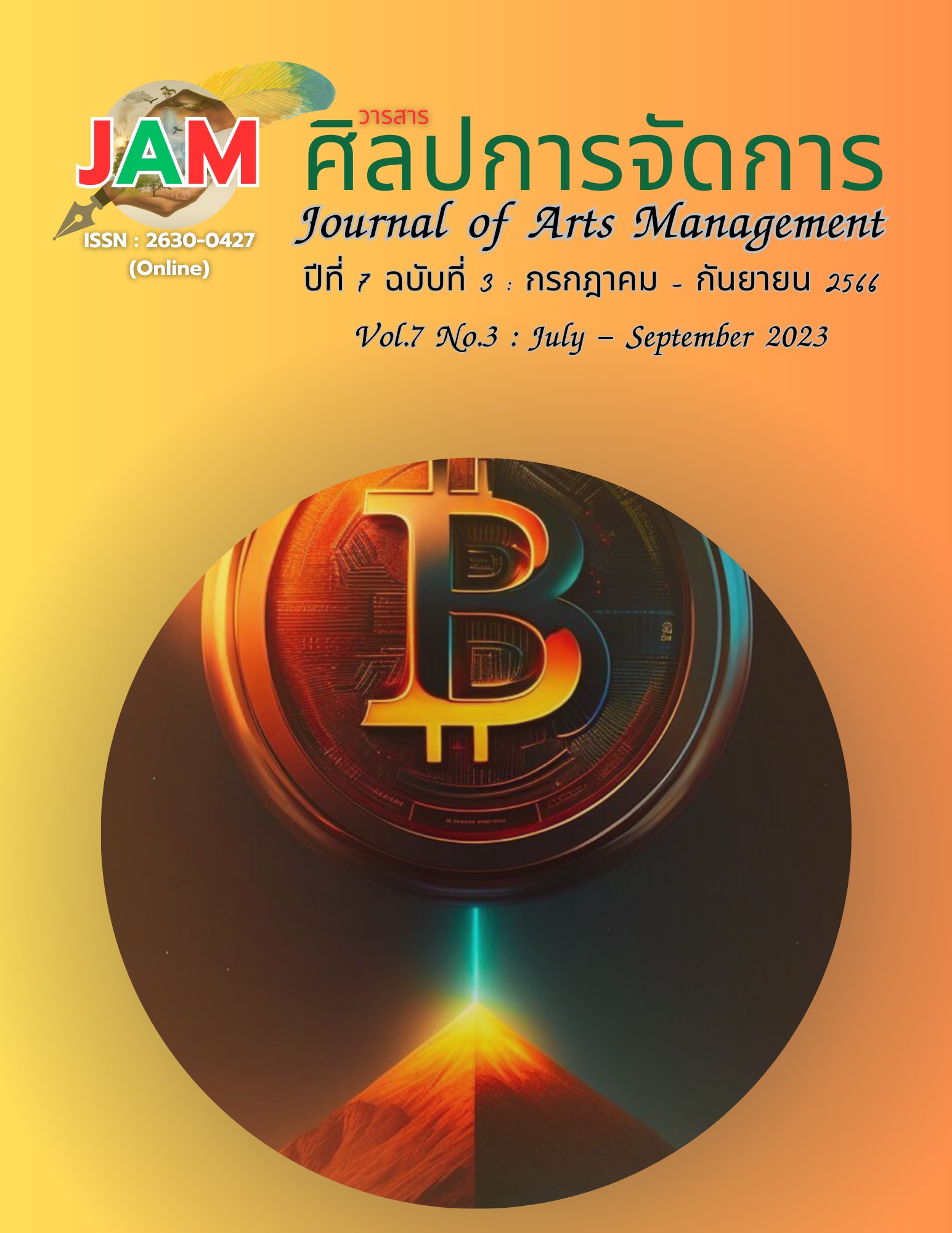A Causal Model of Stress at Work of Employee in Construction Industry
Main Article Content
Abstract
This research aims to 1) study the level of stress in the workplace of employees in the construction industry and 2) develop and verify the consistency of models of causal relationships of employee stress with the empirical data. The quantitative research method was used for the sample of this study, which consisted of 464 employees working in the Bangkok metropolitan construction industry. The questionnaire was used in this study to collect data on the three variables comprising stress at work, adversity quotient, and emotional intelligence. Using techniques of descriptive statistics, the collected data were analyzed in terms of the mean, standard deviation, and structural equation modeling (SEM). The results showed that 1) the total number of employees in the construction industry, stress at work was at a low level, and 2) the finding reveals that the models were improved and developed in harmony with the empirical data (2 = 25.41 df = 16 p = .06 GFI = 0.99 AGFI = 0.96 CFI = 1.00 RMSEA = 0.03 SRMR = 0.02). Consisted of components as follows: Emotional intelligence had a high direct effect on stress at work (-0.20) and the adversity quotient had a low direct effect on stress at work (-0.27). Furthermore, 16% of the variance associated with stress at work was explained by the adversity quotient and emotional intelligence.
Article Details

This work is licensed under a Creative Commons Attribution-NonCommercial-NoDerivatives 4.0 International License.
Views and opinions appearing in articles in the Journal of Arts of Management It is the responsibility of the author of the article. and does not constitute the view and responsibility of the editorial team I agree that the article is copyright of the Arts and Management Journal.
References
Anderson, L. W. (1988). Likert Scales. In Education Research Methodology and Measurement: An International Handbook, John. D. Keeves, eds. Pergamon.
André, R. (2008). Organizational Behavior: An Introduction to Y Your Life in Organizations. Pearson Prentice Hall.
Cartwright, S., & Cooper, C. L. (1997). Managing Workplace Stress. Sage.
Comrey, A. L., & Lee, H. B. (1992). A First Course in Factor Analysis (2nd ed.). Lawrence Erlbaum Associates.
Cooper, R.K., & Sawaf, A. (1997). Executive EQ: Emotional Intelligence in Leadership and Organizations. Grosset/Putnam.
Department of Mental Health. (2022). Stress Relief Guide (Revised Version). Retrieved from http://www.dmh.go.th/ebook/view.asp?id=345.
Goleman, D. (1995). Emotional Intelligence. Bantam Books.
Hair Jr., J.F., Black, W.C., Babin, B.J., & Anderson, R.E. (2010). Multivariate Data Analysis: A Global Perspective (7th ed.). Pearson Education.
Karimi, R., & Alipour, F. (2011). Reduce Job Stress in Organization: Role of Locus of control. International Journal of Business and Social Science, 2(18), 232-236. Retreived from https://www.ijbssnet.com/journals/Vol_2_No_18_October_2011/28.pdf
Kim, H. R., Yunjeong, Y., Keum-Ja, L., & Gerl, K. M. (2014). The Effect of Emotional Labor for Job Stress in Bus Drivers. Korean Journal of Occupational Health Nursing, 23(1), 20-27. DOI:10.5807/kjohn.2014.23.1.20
Larson, L. L. (2014). Internal Auditors and Job Stress. Managerial Auditing Journal, 19, 1119-1130.
Mahatnirunkul, S., Poompaisarnchai, W., & Tapanya, P. (1997). The Construction of Suanprung Stress Test for Thai Population. Journal of Suanprung Psychiatric Hospital, 13(3). https://he01.tci-thaijo.org/index.php/APPJ/article/view/90246
Mayer, J. D., & Salovey, P. (1997). Emotional development and emotional intelligence. Happy Collins.
National statistical office. (2015). Number of employees in construction establishments. Retrieved from https://catalog.nso.go.th/tl/dataset/os_12_00022
Petchrot, L., & Chamniprasat, A. (2002). Research Methodology. Phim Dee.
Real Estate Information Center. (2020). Government Policy to Drive the Economy to Create Trust in The Real Estate Business. Retrieved from https://www.reic.or.th/News/RealEstate/441572.
Robbins, S. P., Judge, T., & Breward, K. (2003). Essentials of Organizational Behavior (7th ed.). Prentice Hall.
Salami, S. O. (2010). Job Stress and Counterproductive Behavior: Negative Affectivity as a Moderator. Journal of The Social Science, 5(6), 486-492. DOI: 10.3923/sscience.2010.486.492
Sawangwan, I., & Jariya, W. (2021). Factors Affecting the Stress in Working Among Myanmar Construction Workers in Muang District, Chiang Mai Province. Thai Science and Technology Journal, 29(4), 675-687. https://li01.tci-thaijo.org/index.php/tstj/article/view/221759
Shen, C. Y. (2014). The Relative Study of Gender Roles, and Job Stress and Adversity Quotient. The Journal of Global Business Management, 10(1), 19.
Sibua, R.U., & Silaen, S.M.J. (2020). Dukungan Sosial dan Kecerdasan Emosional (Emotional Quotient) dengan Stres di tengah Pandemi COVID-19 pada Masyarakat Cempaka Putih Barat, Jakarta Pusat. Jurnal IKRA-ITH Humaniora, 4(3), 187-193. https://journals.upi-yai.ac.id/index.php/ikraith-humaniora/article/view/828/626
Social Security Office. (2020). Situation of Occupational Hazard or Sickness Due to Work Year 2016 - 2020. Ministry of Labour. Retrieved from https://www.sso.go.th/wpr/main/privilege.
Sompongtam, P. (2008). A Comparison of The Quality of Adversity Quotient Tests Based on Stoltz’s Theory Between Rating Scale and Situation Test: An Application of Polytomous Item Response Theory[Unpublished Master’s thesis, Chulalongkorn university].
Stein, S. J., & Book, H. E. (2011). The EQ Edge: Emotional Intelligence and Your Success. Jossey-Bass.
Stoltz, P. G. (1997). Adversity Quotient: Turning Obstacles into Opportunities. John Wiley & Sons.
Stoltz, P. G. (2000). Adversity Quotient @ Work: Make Everyday Challenges the Key to Your Success—Putting the Principles of AQ into Action. Harper Collins.
Sujindamaneechai, P. (2017). The Study and Development of Factors Affecting Government Officers’ Counterproductive Work Behavior[Unpublished Doctoral thesis, King Mongkut’s University of Technology North Bangkok].
Tonrab, C. (2017). Safety Management in The Construction of Industrial Building[Unpublished Master’s thesis, Siam university].
U-on, V. (2011). Research and Business Information Discovery. Sripatum University.


